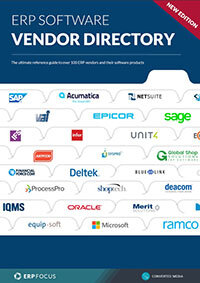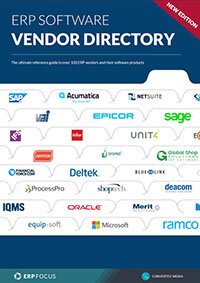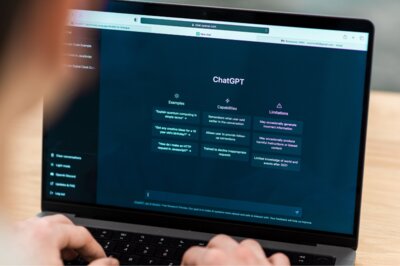The Impact of ERP Evolution on Businesses
ERP has been around for a little under five decades, and during that time it has evolved to the point where businesses that were once confined to operating within their local territories are now able to function and compete within a global market, a necessity in today’s economic climate. Service and goods suppliers have found their reach has expanded beyond the limitations of their physical location to a worldwide level, and with ERP they are now able to effectively manage and track their products and services from any location at any time regardless of geographical location or time zone.
A Tale of ERP Evolution
Prior to the 1970’s businesses were limited to the likes of the commonly-used EOQ (Economic Order Quantity) and ROP (Re-order Point). The 1970’s saw MRP (Material Requirements Planning) providing the ability to use inventory data, bills of material, and the MPS (master production schedule) to accurately gauge how much material would be required for each phase of production, thereby enabling timely ordering of adequate stocks for current and future product manufacturing.
Once the 1980’s rolled around, MRP-II (Manufacturing Resources Planning) had become an enhancement to MRP by incorporating resources used by other manufacturing companies, like shop floor, distribution management and accounting.
The beginning of the 1990’s saw MRP-II evolve to include such features as finance, human resources, engineering, project management and more.
Once companies such as PeopleSoft and SAP started selling more comprehensive ERP systems at higher costs in the mid-1990’s, in order to remain competitive, large businesses had little choice but to transition to these new ERP system and centrally manage their vendors, partners and suppliers. The millennium Y2K saw a huge boost in the implementation of ERP systems.
The ERP systems available today provide businesses with the ability to streamline and control operational processes over many locations worldwide
.
The next huge step in the Evolution of ERP was the development of SaaS (Software as a Service), often synonymous with cloud computing, which supplies customers with software applications via the internet. The subscription-based, cost-effective advantages to the customer of SaaS include the ability to purchase only those features they currently require with the option to add to their system as their business grows and changes. Another benefit of SaaS applications is that updates are immediately installed by the provider as soon as they become available. The days of installing, maintaining and updating software in-house became a thing of the past.
Before too long, social media and analytics became the new trends, and ERP providers were quick to see the potential for their clients to be able to foster closer relationships with their customers, partners, and suppliers, and to build up their brand recognition, all the while competing effectively with other similar businesses. This in turn enabled new markets to be explored and improvements in cross-selling and up-selling to happen. At the same time the ability to increase customer loyalty became easier, as well as being able to reach more potential customers through social sharing.
The evolution of ERP and the advent of big data prominently placed analytics into the equation, allowing businesses to access accurate and up-to-the-minute information that could then be effectively used to predict future growth rates. Large businesses found themselves in a much better position to prepare for the challenges that are commonly faced as companies grow and change, expand into new markets, and try to achieve a durable competitive advantage.
Conclusion
The ERP systems available today provide businesses with the ability to streamline and control operational processes over many locations worldwide, as well as effectively undertake strategic planning for the future growth of their companies. The impact that technology has had on businesses is huge in terms of global reach.
by Todd James, Founder and Editor of ERP Software News
Free white paper

ERP Software Vendor Directory
Put the most comprehensive ERP vendor directory on your desk today

Related articles
-

A beginner’s guide to ERP integration
What is ERP integration, why it matters, and more!
-

CMMC Compliance: What Aerospace and Defense Manufacturers Need to Know
Key insights on CMMC compliance, deadlines, and securing DoD contracts with CMMC 2.0 certificatio...
-

Intelligent ERP systems: What AI can (and can’t) do
What AI in ERP really means for buyers in 2025

